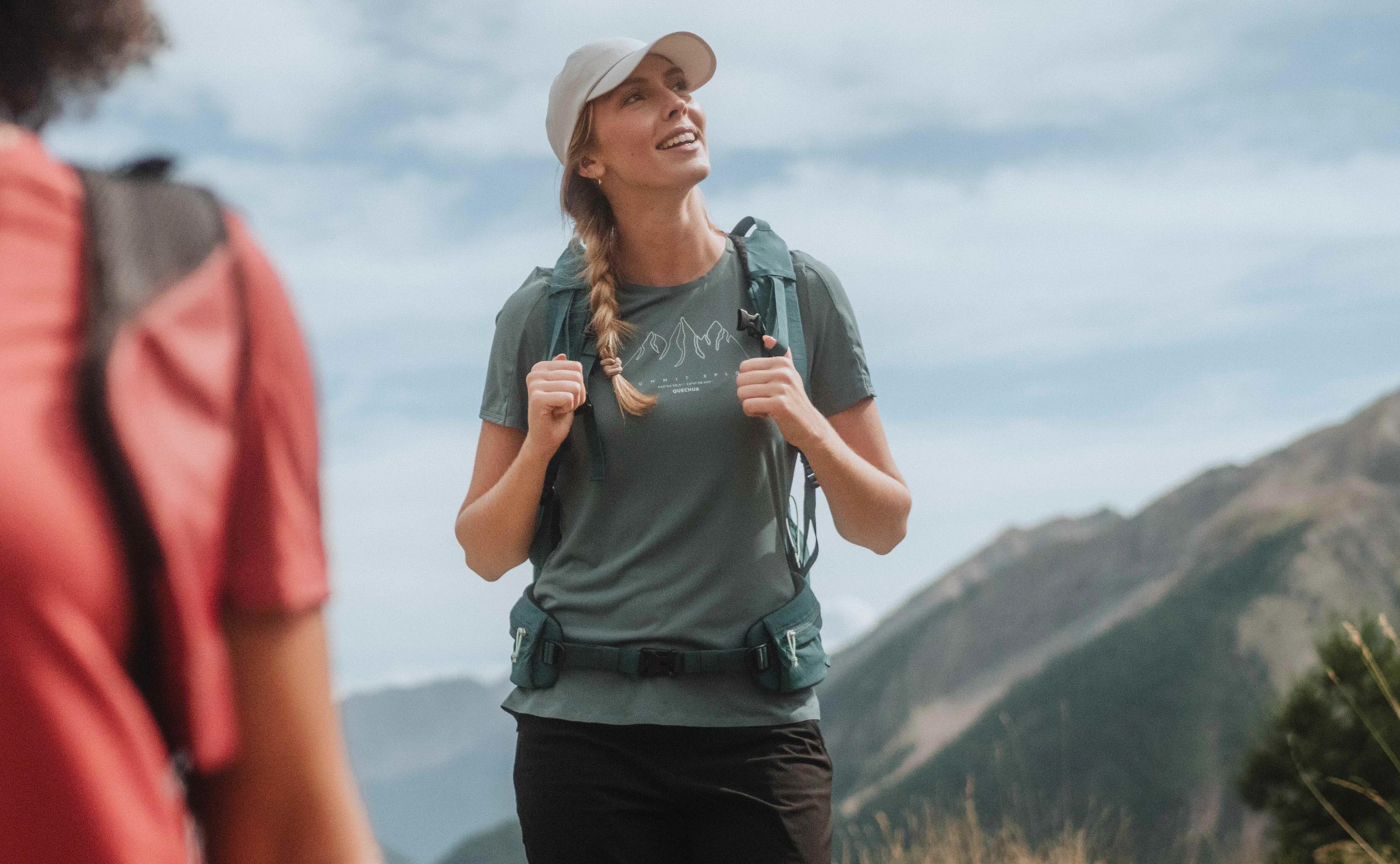
Hiking equipment for beginners
On your search for hiking equipment for beginners, taking into account what kind of routes you will be undertaking may have an impact on the type of apparel you add to your day walking checklist. For example, if you are looking to go on a low-level country walk, your need for hiking gear that protects you from freezing temperatures may not be high on your list. However, if you’re looking to kick off your hiking career with a mountain, investing in warm gear that also releases sweat will give you a far better outdoor experience.
Walking gear for the upper half
How to layer your clothes: the layering system
Getting the right levels of warmth whilst out walking can be tricky. While you only have a certain amount you can bring on your route, the idea of being caught in bad weather without adequate warmth and protection is not fun and not advisable. That’s why, with the layering system, whether it’s to warm up or cool down, you can work out exactly what you’ll need per layer to stay comfortable.
The baselayer - regulating temperature and wicking away moisture
Whether it’s long or short-sleeved, when it comes to choosing a base layer it's all about picking the correct material that will regulate your body temperature, allow your skin to breathe and wick away moisture.
These are some of base layer material options:
Polyester
A durable lightweight fabric that’s quick drying, and has effective moisture wicking qualities.
Recommended for day hiking trips in warm weather.
Merino Wool
This material has superb temperature regulation, working to keep the body at room temperature at all times,
regardless of the conditions. It also has the ability to maintain heat when wet, and has odor-resistant
qualities.
Recommended for hiking trips to colder climates due to its heat regulating and odor-resistant
qualities.
Nylon
Unless the baselayer comes with ventilation panels, this material’s breathability can be poor. It does
however
have excellent durability, is quick drying and has moisture wicking qualities.
Good for hiking trips in warm weather where no other layers are required. Also effective when
walking
through abrasive terrain such as forests and shrubs.
Cotton
Although it has a soft feel and provides comfort in everyday life, this material has poor heat regulating
qualities, is incredibly water absorbent and dries slowly.
Best to leave at home when you go hiking. 100% cotton is not advisable for long periods of walking,
although if you are in need of soft comfort it provides whilst out walking, there are cotton-polyester
options
available.
Silk
Rarely used (due to cost) but has excellent qualities for hiking. Like merino wool it holds heat, keeps
moisture away from the skin and dries very fast.
Recommend for hiking in all weather conditions.
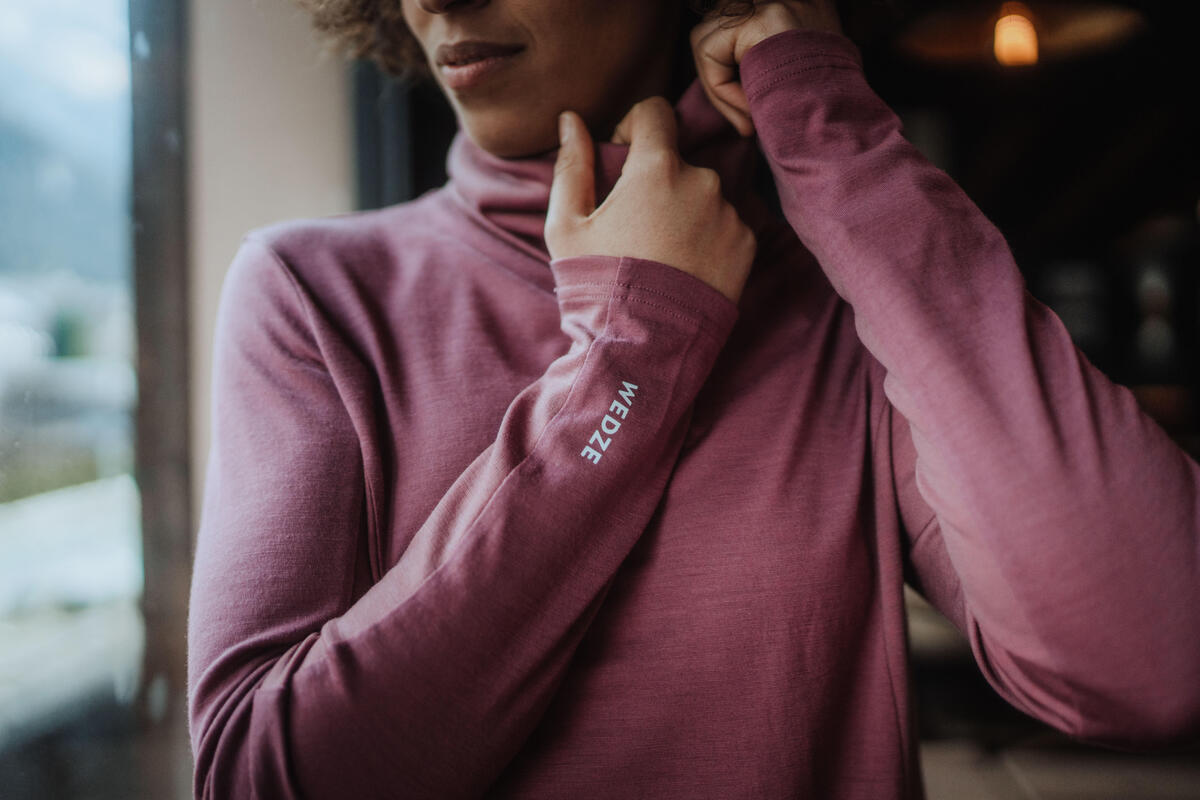
Here are some of your mid-layer options for hiking:
Fleece jackets:
As a beginner, the fleeces that you are looking for should be able to handle temperatures of 7°C and above (as you shouldn’t be doing first time walks or hikes at temperatures much less). The fleeces in question will be made of a micro polar fleece fibre that is far more lightweight and more compact. Once you are ready for more testing walking and hiking scenarios, for fleeces that can handle conditions under 7°C, look for a polar fleece that has a brushed fabric, which captures more air, and is better suited for isolation.
Gilets and body warmers:
The sleeveless, preferred option for many hikers, allows increased ventilation whilst still giving a similar level of warmth and comfort that a fleece provides.
Jumpers:
For a slightly lighter approach to your mid-layer apparel, pullovers and jumpers could be ideal for your essential walking gear. Also, with ever changing conditions, this is an ideal option if you’re looking to keep your layers in your rucksack.
Mid-layer insulation
When it comes to finding the right mid-layer, the main thing to focus on is how you insulate yourself from the cold. When the chill hits, as it inevitably will, especially when hill walking or undertaking an overnight hike, the insulation from your mid-layer will be what stops you from getting the shivers. It is commonly believed that when out walking or hiking, it is better to have a number of thin layers that you can shed one by one. However, everyone’s body temperature works in different ways.
An outer layer for waterproofing and wind-resistance
It isn’t always certain to downpour and be windy when out walking, but there’s usually a very strong chance of it happening. Being caught in the great outdoors when the heavens open without essential hiking gear like waterproof layering isn't just unpleasant, it could be potentially dangerous. When we talk about what to take when walking, one of the first things we mean is outer layer protection that will be waterproof, windproof, breathable and make sure it’s hooded. Extra pockets are always advisable too. Although not an essential, gore-tex material is great to go to when looking for walking equipment for beginners due to it’s excellent rain defense capabilities.
Understanding the mm waterproof rating system
It will give you a much better sense of what type of jacket will suit your walking plans.
1,500mm-5,000mm= waterproof
Suitable for everyday wear, but will also work for walkers and hikers that enjoy a long walk with
little
chance of being caught in torrential rain.
5,000 to 10,000mm = very to highly waterproof
Will work in just about any weather condition, and with the right breathable qualities can also be
used in
everyday circumstances.
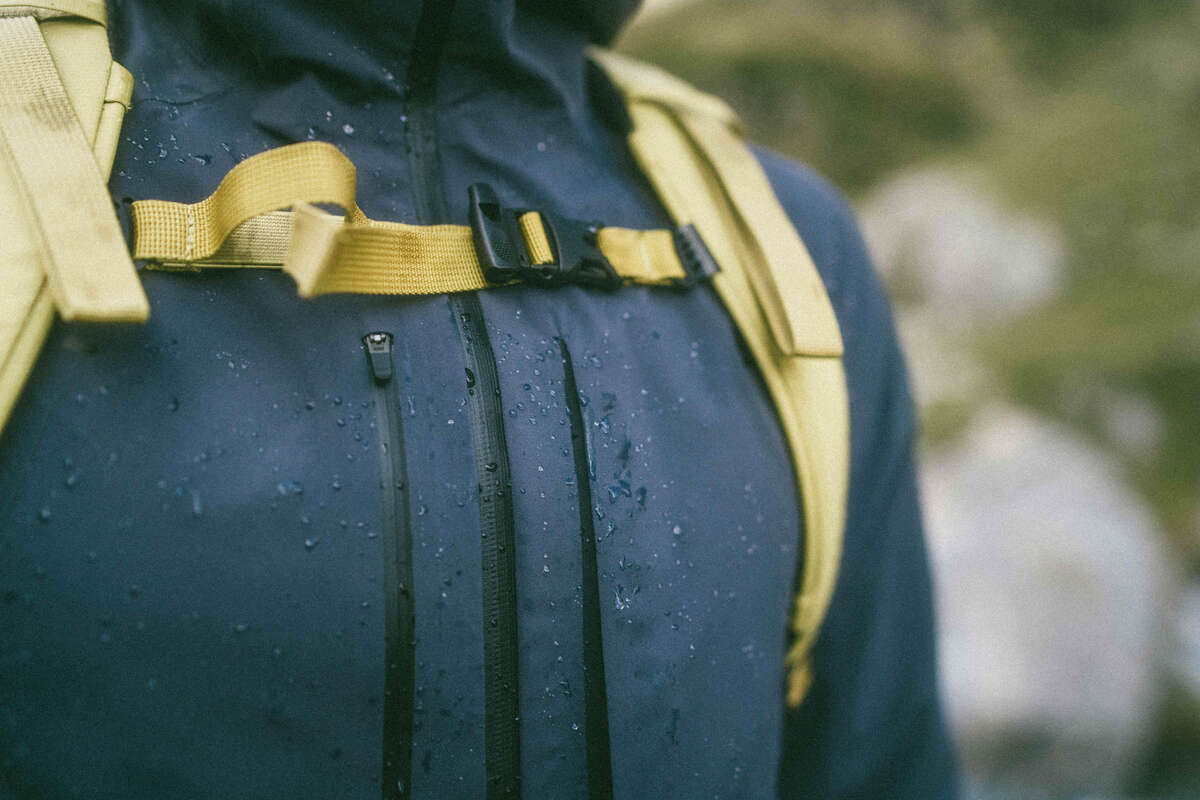
With that in mind, here are some waterproof outer layer options:
Hardshell:
seen by many as the ideal jacket to be worn whilst out walking. Although it is lightweight in feel, it’s durably made, breathable and offers great protection for wind, rain and snow.
Insulated:
ideal for those who feel the chill during the colder seasons. A combination of insulation and water-resistant qualities means this can be used as both an outer layer for cold walks and mid-layer during wet ones.
3-in-1:
if you’re looking for a jacket that covers all bases, this is an excellent option. With a waterproof layering for when the clouds roll over, a mid layer to keep you warm and a breathable base layer for when the sun comes out, you’ll be ready whatever the weather.
Raincoat:
although lightweight, it will keep you warm, dry, ventilated and often features adjustable parts to stop any water from getting in. Can also be worn with an inner layer to provide further warmth.
Parka:
If you aren’t keen on bringing a coat with you and only need a waterproof for the worst case scenario, this is your best option. It’s ideal for a rucksack, but will need to be worn with a warmer mid layer to accompany it.
Walking gear for the lower half
When looking for what to take when walking, finding the correct comfortable, suitable trousers (that
aren’t
denim) are a must. Although tracksuit bottoms or leggings will work on the whole, your legs are getting
a
real
workout, so finding walking trousers of optimum comfort and won’t rub will be a major benefit to your
entire
hiking experience.
Again, it is a wise move to take your surroundings into consideration when searching for the correct
trousers
to become part of your essential walking gear. The outside temperature and distance and steepness of
your
walk
may well play a vital role in the trousers that you choose.
For instance, the right pair of breathable trousers made from synthetic fabric and elastane will
certainly
be part of your hill walking essentials, as they allow a much greater freedom of movement.
With less intense walks, a synthetic cotton trouser will work. If you are mainly playing on
taking
hikes in colder climbs, finding a trouser that has a fleece lining may stand you in good stead, although
it is
also possible just to pack woolen long-johns or leggings, and wear them when the weather turns.
Just don’t go hiking in denim!
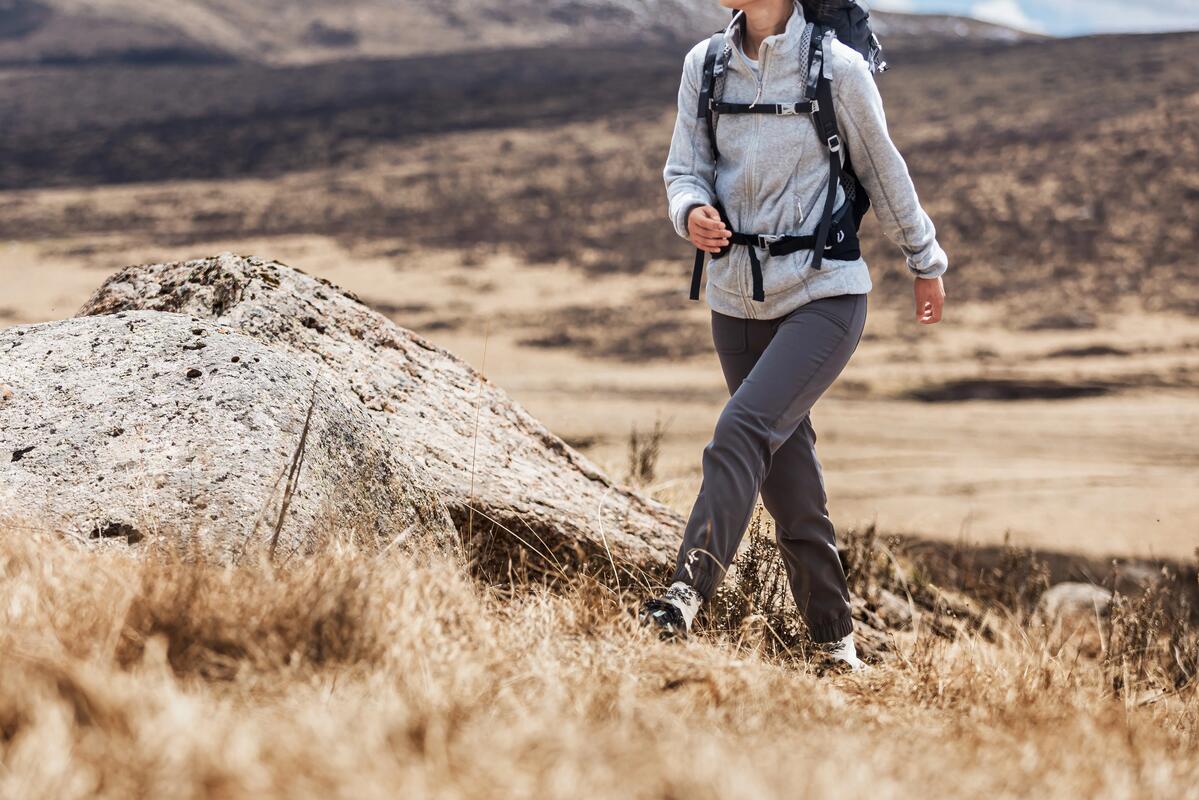
Here’s a rundown of your walking trouser options
Hiking trousers:
excellent for all round outdoor exploration, whether that be walking, hiking or camping. They are quick to dry, have excellent moisture wicking qualities, and combine a relaxed fit with tough material.
Softshell:
for warmer walks, these lightweight waterproof trousers offer excellent breathability, and offer your legs maximum comfort.
Convertible trousers:
have many of the same qualities as hiking trousers, but with the added feature of being able to turn them into shorts.
Waterproof trousers:
an easy to pull on, extra waterproof line of defense to stop moisture saturating your trousers when the weather turns. You’ll often find these come in a stowaway bag, meaning you can keep them in your rucksack until they’re needed.
Tights:
as another protection against wind chill, wearing tights underneath your trousers will stand you in good stead on the colder walks.
Don't forget your socks
Although it again depends on the season, the best advice when choosing your socks is to make sure
they’re
comfortable in whatever boots you’re walking in.
During the chillier seasons, a piece of essential walking gear for beginners is a pair of
thermal
socks. This can be in the longer form, commonly used for skiing, or the shorter ones that stay inside
your
boots. It may even be wise to pack an extra pair for your rucksack.
The last thing you want is for freezing toes when you’re out walking. On warmer routes, a
lighter
weight sock will do, but again, make sure they work with your boots.
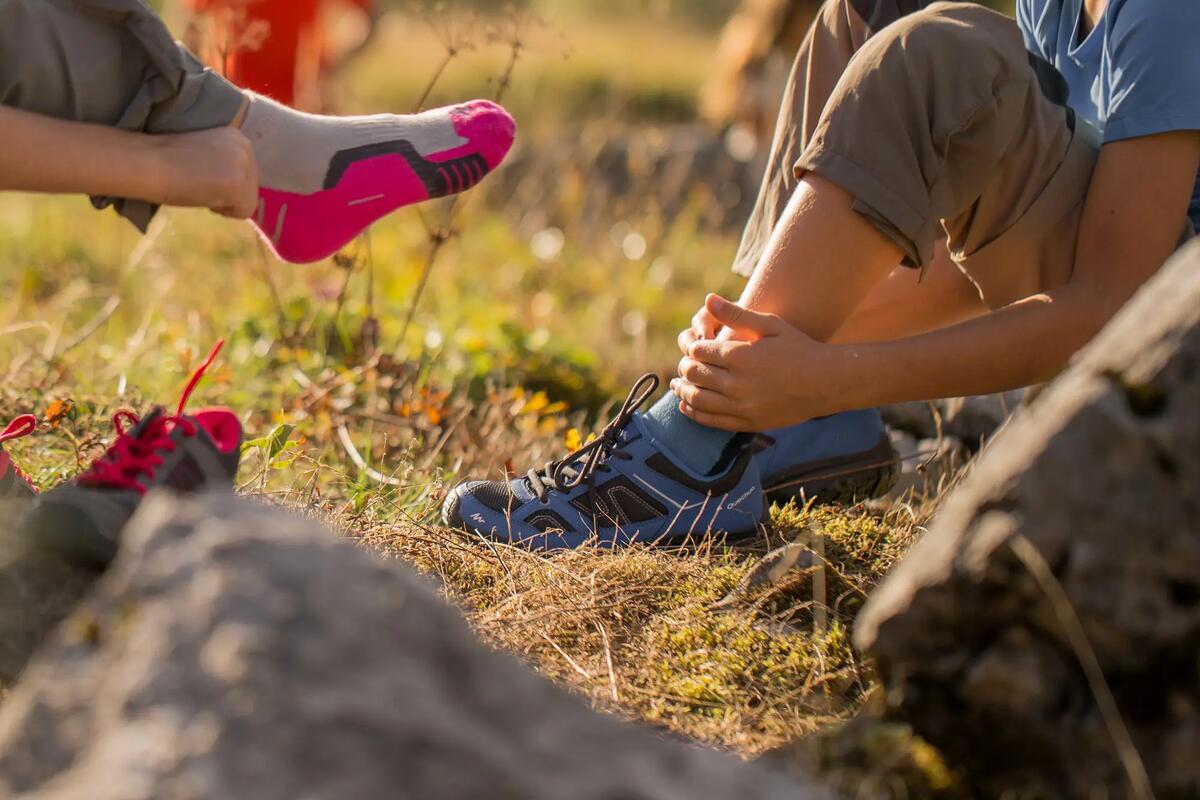
The right pair of walking shoes
Every hiker's essential piece of kit. There are a wide range of options when it comes to choosing the right type of hiking or walking boots. Getting good quality shoe is essential for beginners, but make sure you find the right ones for the type of routes you are planning to do. It’s also important to pick shoes that fit with walking socks on too. You don’t want your first hikes to bring out blisters halfway through.
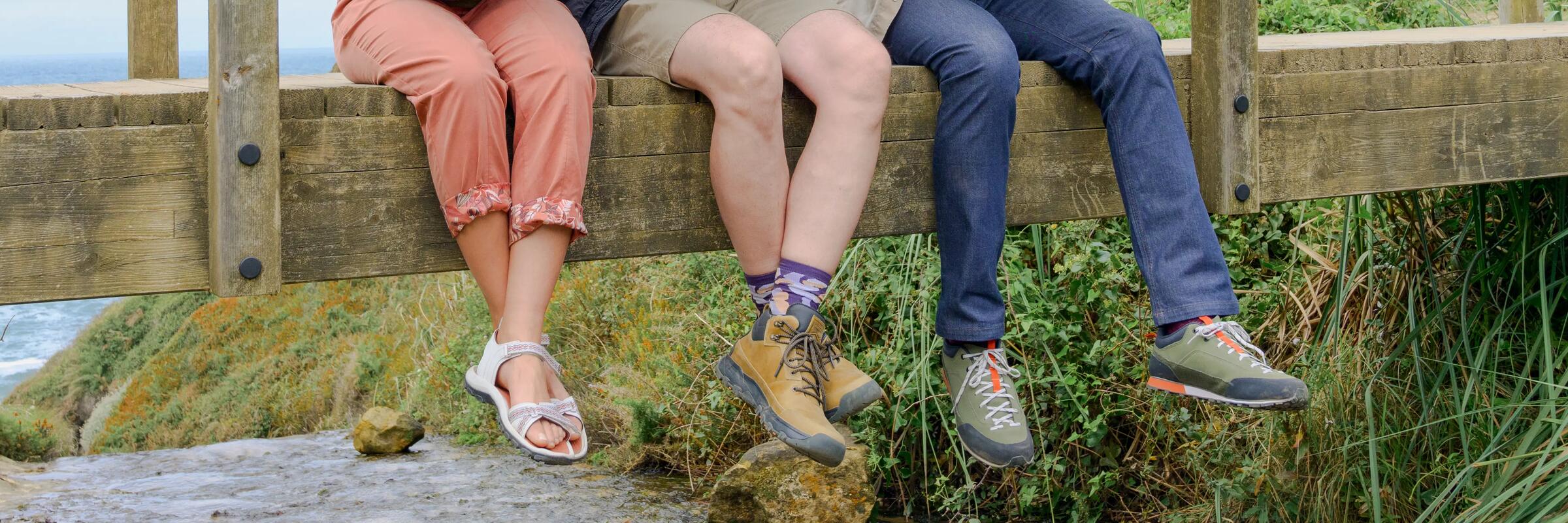
Here’s our selection of different types of walking shoe
Walking sandals:
can be a great option for casual or beginner hikers, especially in the summer months. Sandals are often very light which makes it much easier to move about, ideal for crossing water and they offer good ventilation, making them perfect for the hot sticky weather. It would be wise to opt for a sandal with a toe guard to help protect your feet against sharp rocks. They do offer less support than walking shoes or boots, so you’ll want a sandal with tough soles and good arch supports, and it’s best to stick to short, well-maintained trails.
Low-cut walking shoes:
light and flexible, these are perfect for short walks and day hikes. They have a soft and flexible midsole for support and comfort, but are built to give you enough traction and grip on less demanding terrain, particularly when the weather is good. This type of shoe can be good for beginners who want to start with shorter and easier trails, although they don’t offer the ankle support other more full bodied walking boots.
Day walking boots:
mid-cut models are a good choice for day hikes, especially if you don’t have much to carry and they don’t need much time to break-in. If your trail has water obstacles or if there are likely to be muddy puddles along the way, make sure you choose a boot with a waterproof upper, good stitched soles, and a waterproof and breathable inner lining. Just remember that day walking boots offer less support and durability compared to backpacking boots, so aren't ideal for longer hikes.
Backpacking boots:
standing taller around the ankle and sometimes including a half steel shank for more support, this is seen as the tougher version of the walking boot. Whether it’s hill walking or mountain trekking, these will keep you feeling comfortable and secure.
View our modelsFinally, your day walking essential kit list:
If you're going on a day hike. Here's our list of essential gear to get you going.
A rucksack:
if you’re looking to bring other essential hiking gear along, you'll probably do it in a rucksack. As a beginner, you should be looking to only go out for 4 - 5 hours, so a 10 - 30 litre daypack should be enough space for you to pack in all your hiking essentials. Also look for one that’s waterproof to keep everything dry.
Hiking poles:
although it may seem an extreme for essential equipment for beginners, poles are an increasingly common sight on footpaths, due to their to help you travel faster and more safely. Using one or two poles can help with balance, especially on slopes or rocky paths.
Hat and gloves:
a hiking trip can quickly turn unpleasant if the weather turns. That’s why it’s vital to make sure that a hat and pair of gloves are always in the forefront of your mind when thinking about what to pack. For the same reason, it is also important to bring a hat that can keep you in the shade if you know the sun will be out.
A watch:
or any other way to tell the time. Keeping your eye on the clock and in turn when the sun is setting is a must when out walking the great outdoors.
Something to eat and drink:
as you are probably planning to be out walking for a long time, it’s important you pack food and drink. While it’s vital you stay hydrated throughout a walk, the amount of food you need to bring will depend on the length of time you will be outdoors. However even if you are only going for a few hours, snack bars are a very good way to stay energised.
An extra layer:
we’ve already covered the layering system, but if it always helps to pack an extra fleece or jumper, just in case you or one of your party starts to really feel the cold.